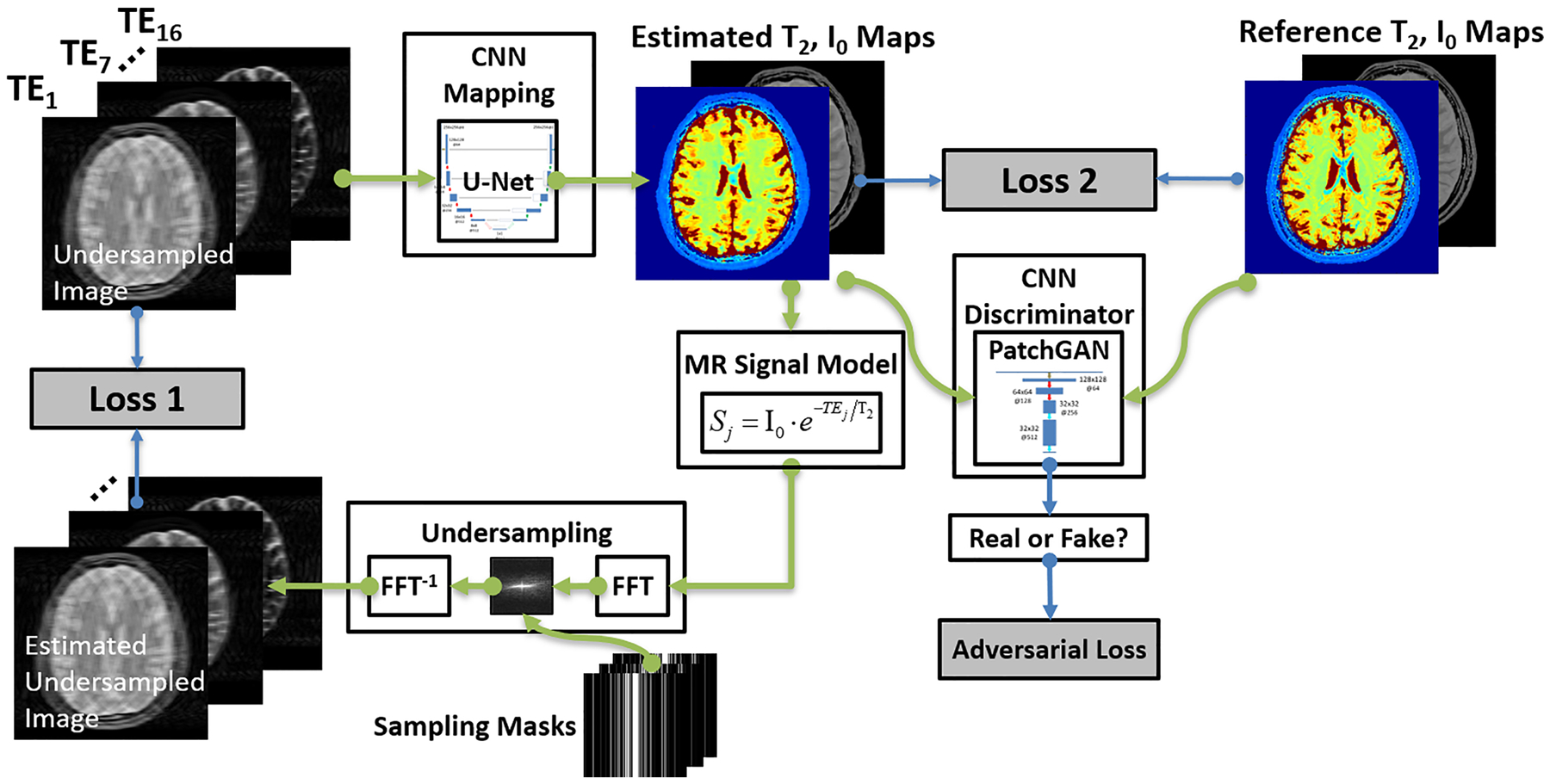Figure 1:

The schematic demonstration of the MANTIS-GAN framework. The MANTIS framework uses two components, including the first loss term (loss 1) to enforce data consistency between the synthetic undersampled data and the acquired k-space measurements; and the second loss term (loss 2) to ensure the similarity between the estimated parameter maps and the reference parameter maps. Building on the foundation of this framework, MANTIS-GAN introduces the third adversarial loss highlighting that estimated maps resemble the same tissue features and image sharpness as the reference maps from fully sampled data. The MANTIS-GAN framework synergizes the data-driven and MR physics-informed knowledge and introduces adversarial training for improved detail preservation.
